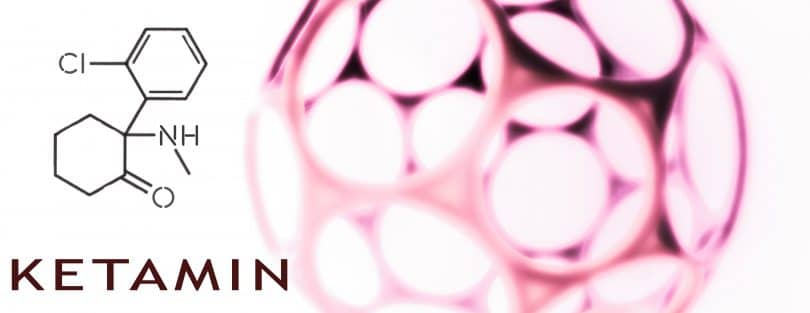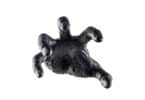The psychedelic boom is underway, and so far, the biggest winner is ketamine. Even without an official FDA pass for it, ketamine has become the new darling of the antidepressant world, and for good reason. It seems to work well. The US government recently legalized half-brother esketamine, but that’s not the end of the story. Now there’s arketamine, the brand spanking new ketamine, which looks like it’ll be hitting pharmacies soon enough.
Arketamine is the not-so-new ketamine alternative that we’re only now hearing about. Is it better than standard ketamine? This publication specializes in reporting on the growing cannabis and psychedelic fields. Play along by subscribing to The Cannadelics Weekly Newsletter, and get daily updates, while also putting yourself first in line for tons of product promotions. What can you get? Awesome deals on smoking paraphernalia, cannabinoid compounds (HHC-O, Delta-8, Delta-9 THC, Delta-10 THC, THCO, THCV, THCP, and HHC), and new psychedelic products, as they become available.
What’s ketamine?
Ketamine is a dissociative hallucinogen created by pharmaceutical company Parke Davis in 1962. It was cleared for use as an anesthetic by the FDA in 1970, and has retained that designation ever since. Ketamine is a short acting drug, with chemical formula (C13H16ClNO), and has cataleptic, analgesic, and sedative properties. It’s not a hypnotic, however, so it doesn’t directly bring on sleep. As a dissociative, it can make the user feel like different parts of their brain are moving away from each other. It’s described as “electrophysiological and functional dissociation between thalamocortical and limbic systems.”
Ketamine was never cleared for use as a pain medication or antidepressant, but is found useful for these problems. Though its usefulness as an antidepressant took longer to come out, it’s ability for pain control was established before it’s approval for anesthesia. Ketamine was the subject of prisoner studies at Jackson Prison in Michigan in the 1960’s. At this time it was found that ketamine is an effective analgesic (enough to be used on the fields of Vietnam subsequently); that subjects retained normal blood pressure, respiration, and general vitals, (which is different from opioids which causes depression of these factors, often leading to overdose); and that it showed to be very safe, with little-to-no worry of death.
It was also found at that time that ketamine has psychotropic effects, but this was not defined until later. As per study investigators, “Others showed marked alteration in mood and affect, some becoming apprehensive and aggressive and others markedly withdrawn.”
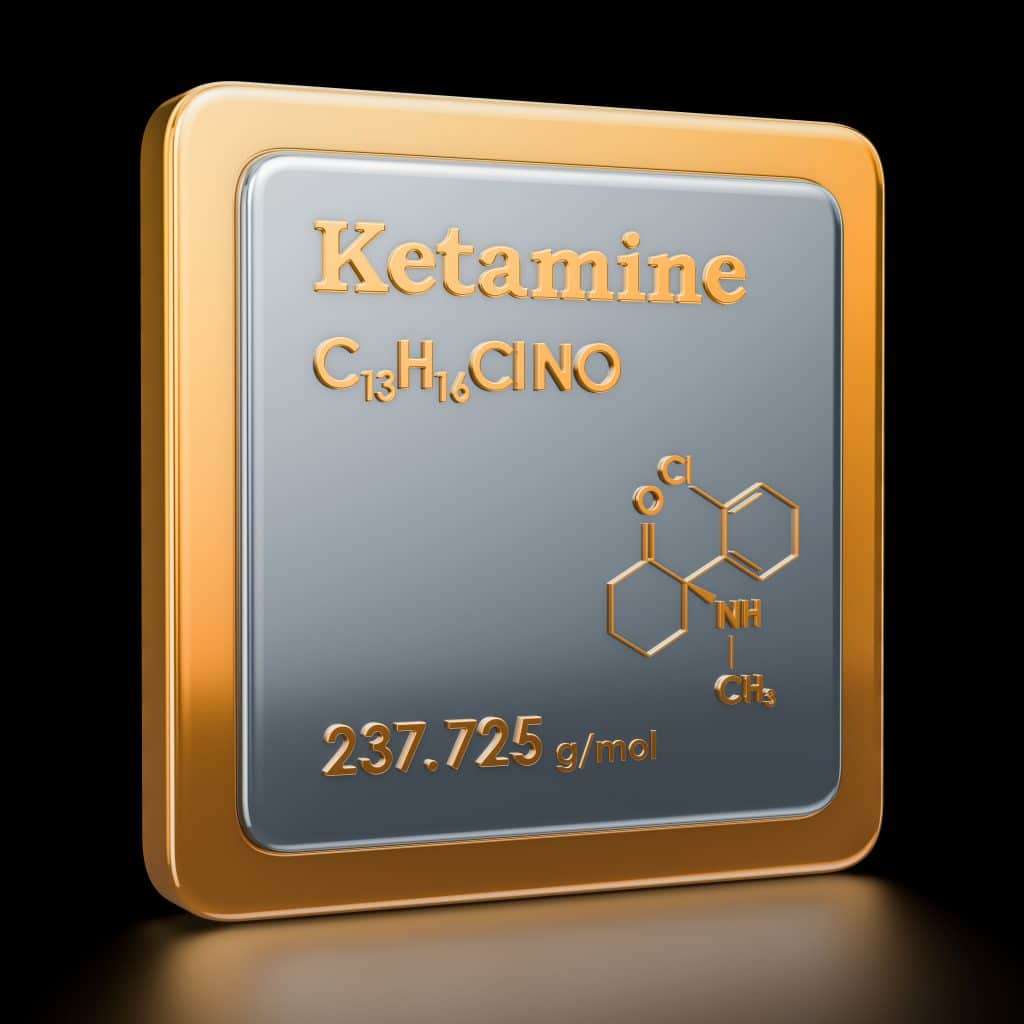
In the years following, its ability for depression management, did come out clearly. In fact, clear enough for an off-label ketamine market to blossom up, providing clinics where prospective patients can get a valid diagnosis and prescription from a doctor, to use ketamine for depression or pain issues. That market is still steadily growing, all over the US and beyond.
Enter esketamine…
So, what did the government do in light of this growing ketamine market, for which it didn’t approve the uses? It didn’t change course and approve ketamine, but it did approve its half-brother, esketamine. However, it put many limitations on this legalization. For example, if a patient wants it, they must get a prescription from a specialist. This doesn’t sound like a bad thing, but it means the specialist must themselves approve of this treatment, as most specialists won’t write a prescription for something they don’t personally approve of. This creates difficulty, as years of smear campaigns can affect what medical professionals are willing to do.
Another negative is that a patient must have already taken two standard anti-depressants for at least six months each, or be on one currently, which is not ideal for patients looking to ketamine as an alternative treatment. A lot of people in that category don’t want a standard antidepressant. On the plus side, since it’ an approved medication, medical insurance can cover esketamine treatment, making this about the only real benefit for consumers. Ketamine clinics are very expensive, rendering treatment nearly impossible for many at the moment.
In terms of the difference between ketamine and esketamine, they’re nearly the same, as esketamine makes up half of ketamine. Esketamine has the same chemical formula, and was first created in 1997 by German scientists. Regular ketamine is considered ‘racemic’ ketamine, “Ketamine is a racemic mixture containing 2 mirror image molecules, R- and S-ketamine.” Esketamine is therefor ‘S-enantiomer’ ketamine. Get the name? (S-ketamine –> esketamine).
The term racemic mixture refers to a compound that has “equal quantities of two enantiomers, or substances that have dissymmetric molecular structures that are mirror images of one another.” Enantiomers are a “pair of objects related to each other as the right hand is to the left—that is, as mirror images that cannot be reoriented so as to appear identical.” That would be the ‘R’ side and the ‘S’ side. Together they are ketamine, and when looking at just the ‘S’ side, it’s esketamine. But what about the other side?
And now Arketamine, the new ketamine on the block
Though there is still no talk of approving racemic ketamine for depression and/or pain, there is yet another ketamine in testing, and this new version is the mirror image to esketamine. Arketamine is the other half of racemic ketamine. Get the name again? R-ketamine –> arketamine. Whereas S(+)-ketamine, functions as the S-enantiomer of ketamine, (R)-(−)-ketamine functions as the R-enantiomer of ketamine. Together they form racemic ketamine.
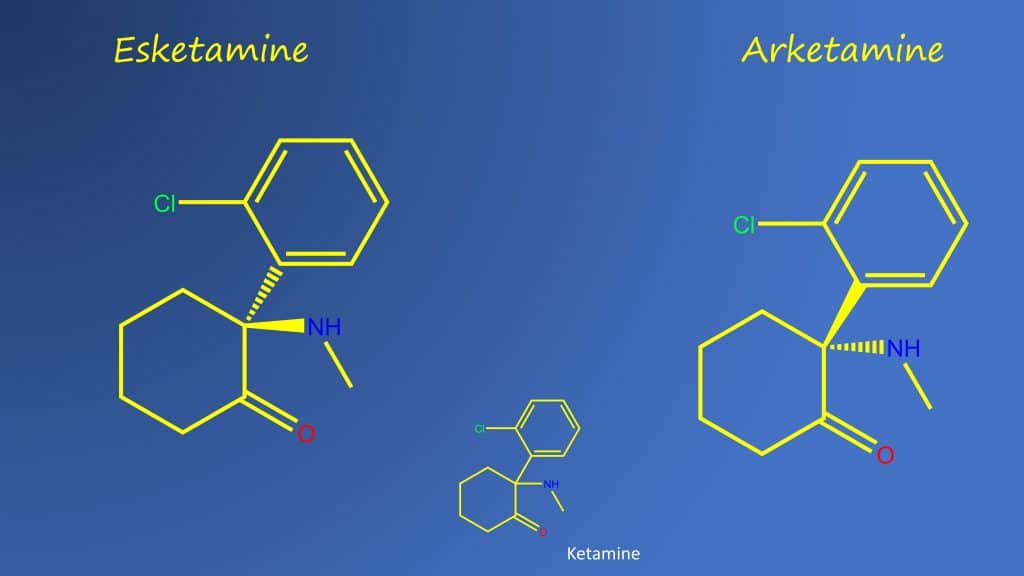
Why would the search continue for parts of ketamine, rather than approval of both sides as standard ketamine? I certainly can’t say for sure, but perhaps there’s a desire not to officially compete with a gray market that could be incredibly difficult to overtake. Think of how legal cannabis markets constantly fall short of black markets. This would be the same.
Or it could be about who’s making the drugs. Johnson & Johnson has the only approved esketamine medication, called Spravato. Johnson & Johnson is also the biggest payer right now in a slew of opioids lawsuits which has top pharma companies involved, paying over $26 billion worldwide…and counting. Is the company trying to recoup its losses? We know how much these companies pay into the pockets of congressional representatives. And as ketamine stands as the best answer to the opioid epidemic, it certainly makes me wonder if companies like J&J are setting themselves up to collect the monetary reward, that comes with the answer to the very opioid epidemic they started. I guess we’ll have to wait to see on that one. For now, that topic is heavily downplayed despite rising opioid deaths.
The thing about arketamine, is that its older than esketamine, having been synthesized back in 1962, when standard racemic ketamine was first found. In fact, it was found by the very same researchers at Parke Davis. So not only has ketamine been known about for decades, so has arketamine. And even with the knowledge of these drugs, we still have a growing opioid epidemic, and not one word about why these drugs aren’t used to stop it.
What are the differences?
The main reason given for the push of esketamine over ketamine, is that it works better for depression, but might have fewer side effects. This despite the understanding that the racemic ketamine used in clinics is doing just fine, and has for quite some time. The whole ketamine industry relies on the ketamine to work, and it’s doing exactly that, it’s working. And while this doesn’t mean there isn’t room for improvement, it does make the justifications for one over the other, shaky at best.
In most testing, esketamine comes up as not much different from standard ketamine. In fact, the only minor difference, is exemplified by this 2009 study, in which investigators state that patients taking esketamine are “reported to be less prone to psychomimetic side effects, such as derealisation and hallucinations,” with the conclusion, “S-ketamine might exert similar antidepressant effects as ketamine in drug-resistant depression but may be better tolerated by the patients.” As these side effects are always transient, minor, and without a death toll, one could ask why it matters, but I suppose a version that essentially causes less high, isn’t the worst thing.
When it comes to arketamine, it’s the same line that’s used. Now, apparently esketamine causes too many side effects, and arketamine is the new direction to look in. In the 2021 study Intravenous arketamine for treatment-resistant depression: open-label pilot study, investigators examined arketamine’s ability as an antidepressant. They found that after a single infusion, subjects showed a mean drop on the Montgomery-Åsberg Depression Rating Scale, after only 24 hours. In fact it dropped over 20 points, and without the dissociation seen with standard ketamine.
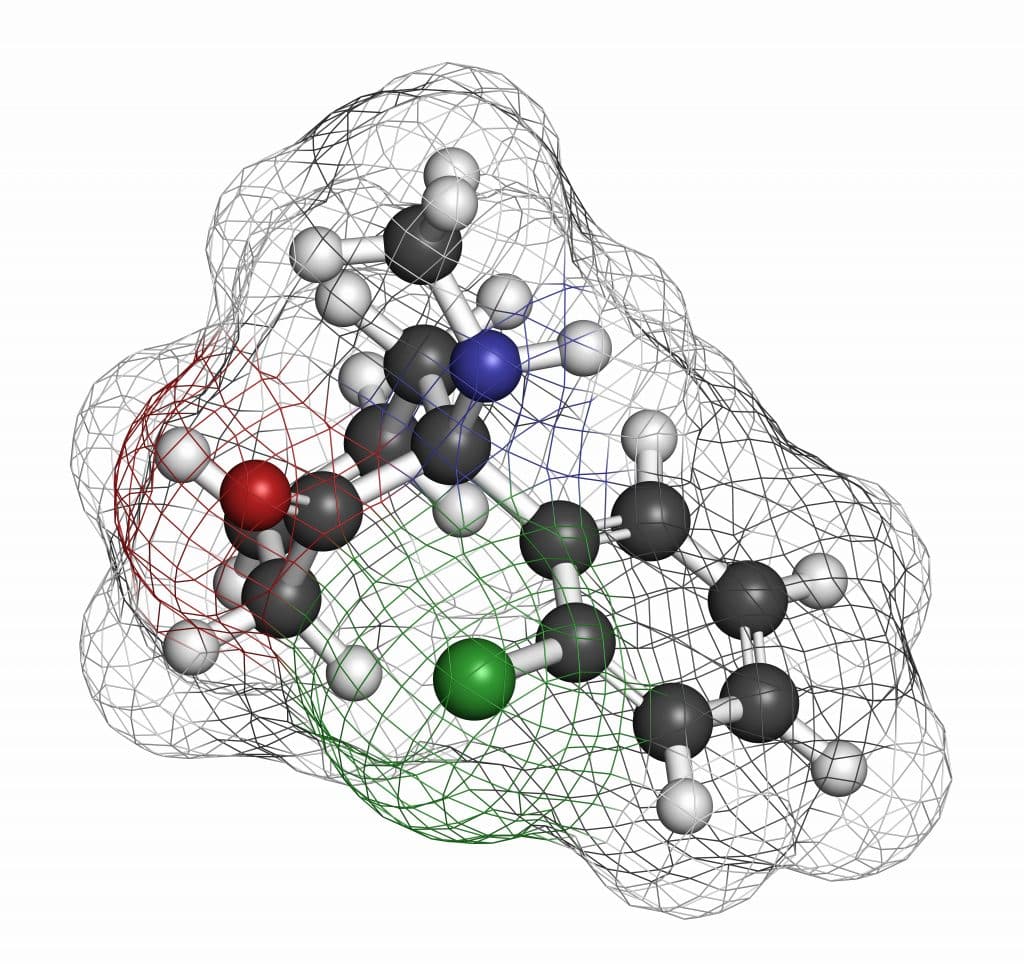
Investigators concluded that “arketamine might produce fast-onset and sustained antidepressant effects in humans with favorable safety profile, like previously reported with animals; further controlled-trials are needed.”
So then, is there really a noticeable difference between esketamine and arketamine for depression management? Well, kind of. A study from 2012 entitled R (−)-ketamine shows greater potency and longer lasting antidepressant effects than S (+)-ketamine, specifically compared arketamine to esketamine for depression. The study turned up results that both are perfectly fine, and ultimately comparable in dealing with depression, but that “R-ketamine appears to be a potent and safe antidepressant relative to S-ketamine, since R-ketamine may be free of psychotomimetic side effects.”
If all this sounds familiar, consider that its reminiscent of CBD, and giving only that to patients, rather than the whole cannabis plant. The entire reason for that practice is based on the idea that THC gets a person high, and is therefore bad. But do we really care if people have non-lethal temporary reactions that make them feel good, especially if they’re helped in the end? Are we really letting that notion still get in the way of treatment, and somehow without considering the backwards logic that we have to keep people from feeling good at any cost? Arketamine sounds like it’ll do well. But, let’s be realistic, ketamine already does.
Conclusion
I expect we’ll see arketamine get approved as some big pharma medication soon enough. And then pushed as the ‘better’ option. Luckily, we still have a gray market for ketamine therapy, to help all those who want to get better, but don’t want their treatment based on government requirements.
Hello readers! Welcome to Cannadelics.com, your #1 web location for fully-rounded coverage of the cannabis and psychedelics spaces. Read thru the site daily for important updates, and sign up for The Cannadelics Weekly Newsletter, so you’re never late on getting the news.


